Oh, no.
Do you know there is a difference between a "hamon" and a "quench line"?
To say "hamon line" just ain't right.
The "hamon" is created by the "clash" between high temperatures in steel running up against cooler temperatures in steel.
When you fully austenize a shallow hardening steel with the spine covered in clay and quench it, the exposed area quickly cools to begin the creation of martensite.
The area under the clay is insulated from the quench and remains hot for a period of time long enough for the steel to revert to pearlite.
It's the "clash" between the exposed cooling steel and the protected hot steel that create the homan, which si very random because you need to consider the different thicknesses of the steel from guard to tip and spine to cutting edge.
So all along these varying dimensions, there's this real random "storm" going on between temperatures.
This "storm" results in hard and soft areas that, when etched, show the hamon.
As well, this only occurs in shallow hardening steels like 1095, W1 and W2 and NOT deep hardening steels like O1 and 5160.
Hamon:
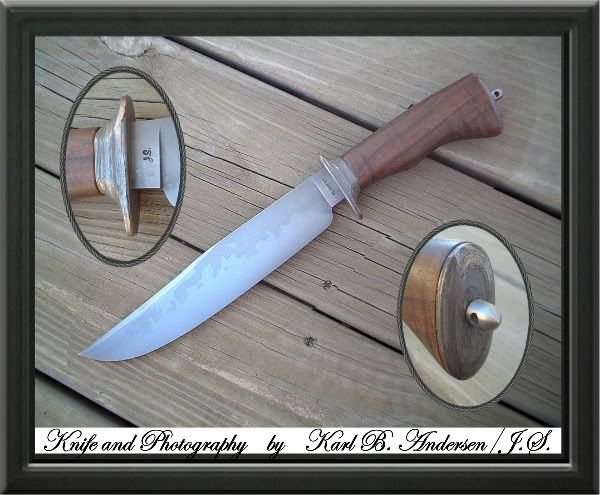
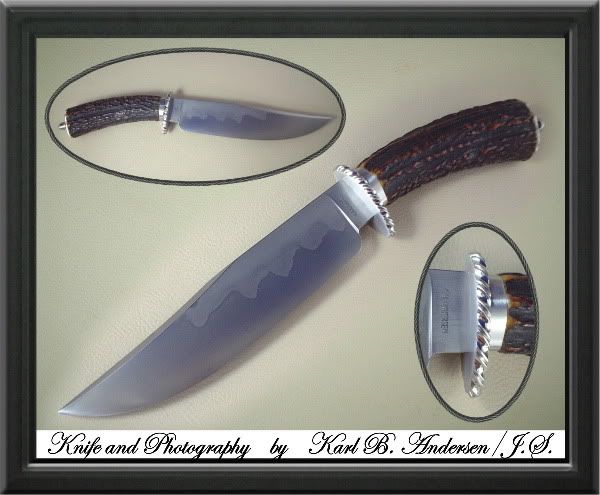
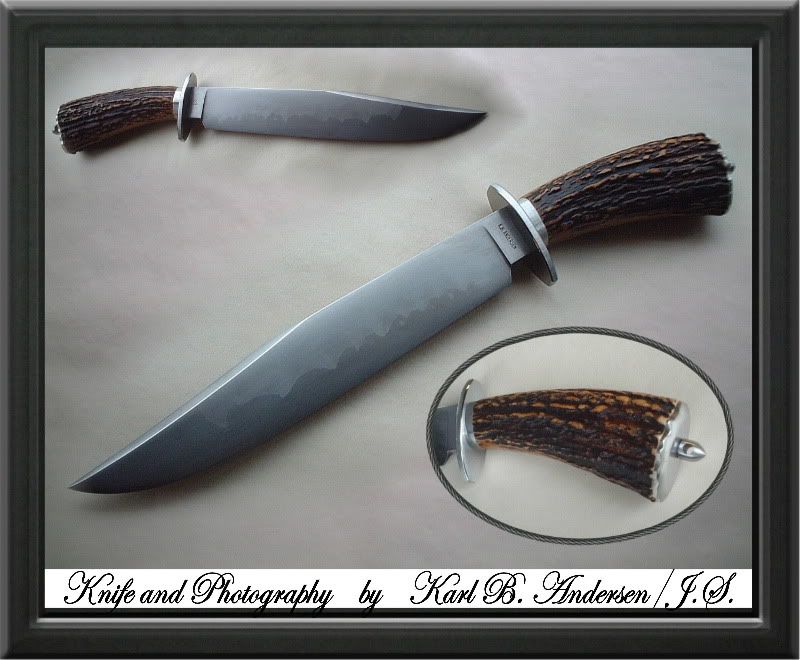
To get a "quench line" is most often achieved with something like 5160 by only heating the lower portion of the blade with high heat from an acetelyne torch and then quenching and using a limiter plate in the tank to restrict how much of the blade is in the oil.
The line is created by the level of the quenching oil.
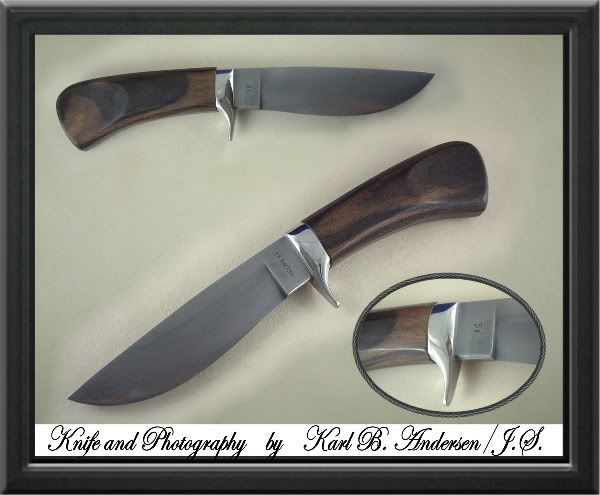
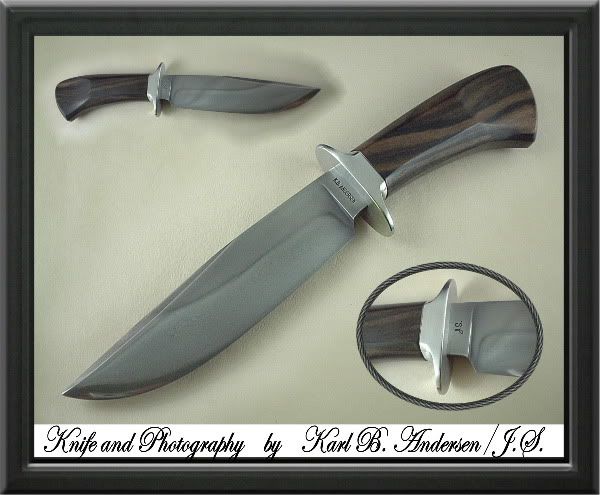
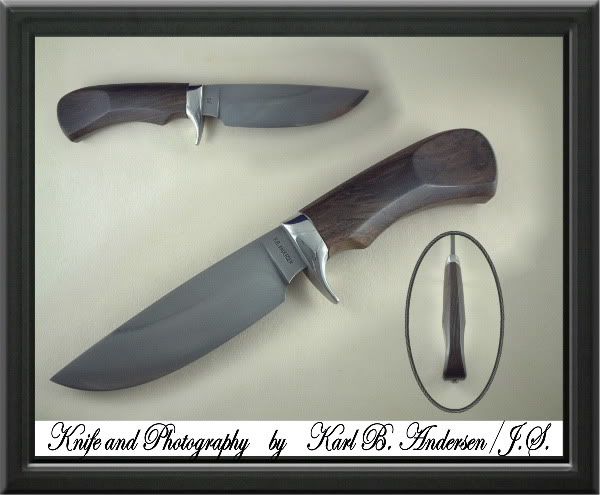
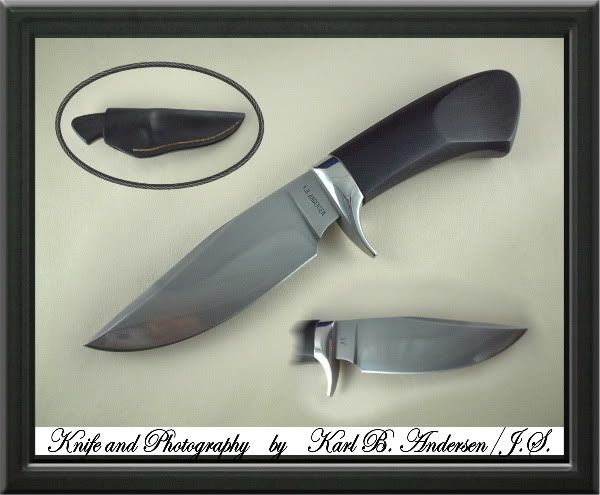
In working with these methods, this is where all of those factors I have discussed come into play like the proper steel type, and the matching speed of oil for THAT steel type and proper control of heat.
You can fiddle around and get a blade hard. That's not a difficult task and can be done by violating all kinds of basic knifemaking metallurgy rules.
But when you want to specifically create, not only a hamon or a quench line, but STILL!!! have a blade that is correctly hard right where you want it, with NO cracking and no soft spots, then you've got to get all those little duckies in a row.
Steel type, precise control of exact austenizing temps, correct austenizing times, correct quench oil for THAT steel, correct clay and thickness placement, quench depth and time, etc.
Nuthin to it.




















